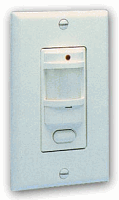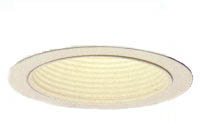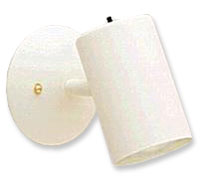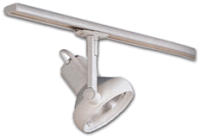Proper Basement Lighting Techniques
Adding light, whether it is natural or artificial, can make a significant difference in your basement's overall feel. Since basements tend to be dark and gloomy, adding light should be your first step. If part of your basement is above ground, take advantage of this by having as many windows as possible. You should let in natural light wherever possible so look for simple window treatments that allow the most light to pass through.
Make creative use of artificial light
Typically, basement ceilings are low, so that you get the feeling you're in a cave. To offset this, use indirect lighting that splashes large pools of light on the ceiling. This will open up the space and make rooms appear higher than they are. A mix of this up-lighting and traditional recessed lighting will give you the flexibility you need to create a variety of lighting moods. Mirrors, mounted on the walls or even ceilings, can also amplify and reinforce lighting effects.
When natural light isn't an option, artificial light can be used abundantly to create a warm atmosphere. No fluorescent light please! (While fluorescent lighting is very cost effective and energy efficient, it is not the most appealing option speaking in terms of design.) Table and floor lamps work well and some ceiling lighting can be used also.
Maximize natural light
For many reasons, you'll want more light. If parts of the basement extend above the ground, you can add new windows or enlarge existing ones. If that isn't possible, another option is to dig window wells. Window wells can increase the odds of water problems, so it's a good idea to build ones with waterproof covers. Another advantage of enlarged windows is that they provide alternative escape routes in case of fire. One concern that some people have about basement windows is that they provide thieves with ideal access to the home. One way to mitigate that risk is to install glass bricks (rather than conventional windows) at high-risk locations. Maximize the effect of regular windows by mounting some windows in the interior walls between rooms that open pathways for natural light to reach interior rooms. Natural lighting in basements via windows is a security problem, since a burglar can break a window. To get natural light without security worries, consider using glass blocks to replace the regular window.
Quick tip
Use mirrors to reflect light.

Occupancy Sensors
Add energy efficiency and hands-free convenience with occupancy sensors. When you come down the basement stairs with your hands full, these sensors will turn on the lights automatically, keep them on while you are moving around the room and turn the lights off after you leave.

Recessed Lighting
Use recessed lights for basic general lighting where you have room in the ceiling for recessed lighting. Incandescent recessed lights give a brilliant white light and a brighter look in basement areas.

Surface Mounted Spotlights and Directional Lights
Perfect for decorative lighting effects where you don't want to install track lights or recessed lights. Use surface-mounted spotlights and directional lights to highlight pictures and architectural elements. Spot lights and directional lights also provide task lighting in kitchens, home offices, bathrooms and other areas where task lighting is needed.

Track Lights
Incandescent track lights give a brilliant white light. In a basement, they give the space a more finished look.
Quick basement lighting tips
Turn off the lights in any room you're not using, or consider installing timers, photo cells, or occupancy sensors to reduce the amount of time your lights are on.
Use task lighting; instead of brightly lighting an entire room, focus the light where you need it. For example, use fluorescent under-cabinet lighting for kitchen sinks and countertops under cabinets.
Consider three-way lamps; they make it easier to keep lighting levels low when brighter light is not necessary.
Use 4-foot fluorescent fixtures with reflective backing and electronic ballasts for entire basement.
Consider using 4-watt mini-fluorescent or electro-luminescent night lights. Both lights are much more efficient than their incandescent counterparts. The luminescent lights are cool to the touch.
Recessed lighting in basements creates a more open atmosphere than surface fixtures and are less likely to be broken by child play.
Use shallow housings for basements where vertical installation space is limited such as 2" x 6" construction
A-lamp multipliers provide a more diffuse, uniform lighting
Narrow beam lamps create more dramatic effects on objects and artwork.
To Step One: Waterproofing Your Basement
